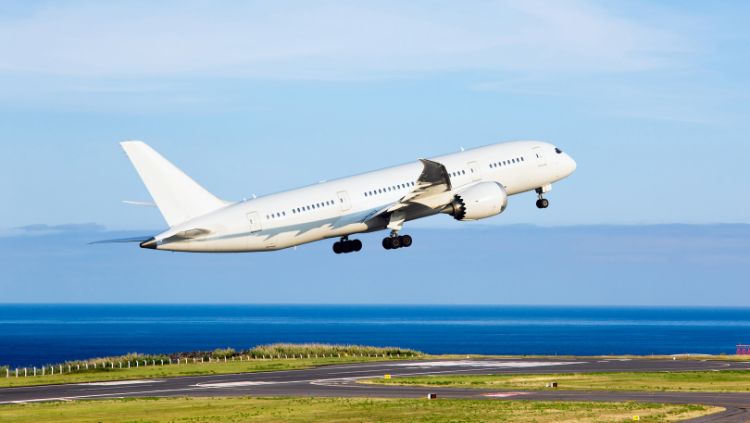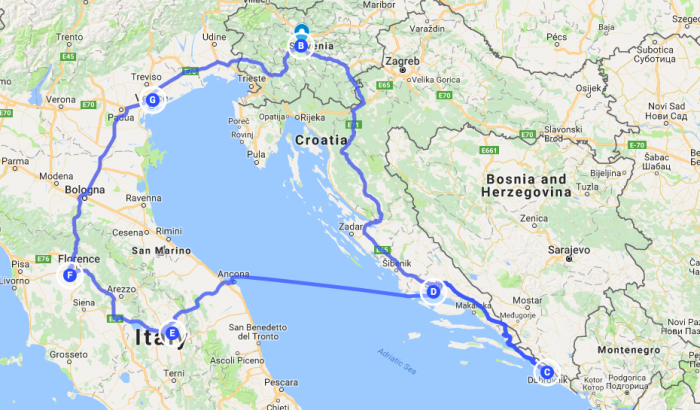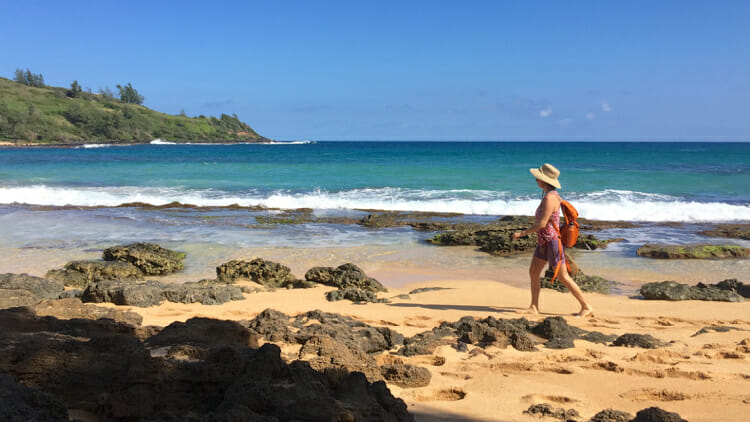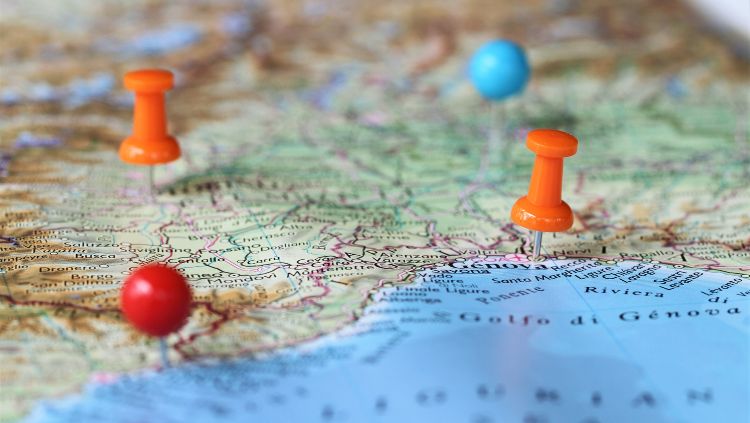You may be the ultimate travel planner. Perhaps you prefer an organized tour. Maybe you just like to go, wander, and see what happens. Regardless of your travel style, some solo travel planning is a good idea.
Planning a solo trip may require more attention than any other kind. After all, it’s all up to you. So, for your own safety and peace of mind, it’s good to have some planning done in advance.
This is why we update this post every year with current information on travel trends, a solo trip planning checklist, and some of our favorite tips that we’ve learned along the way.

2024 Travel Tends and Pro Tips for Solo Travel
Negative travel trends to watch out for:
- Increase in shoulder season travel. This was once a go-to solution for budget solo travelers looking for deals. Traveling on the shoulder season, spring and fall, could save money on hotels, flights, and more. Now, with more people turning to the shoulder season to keep costs down, the difference in price is not as substantial as it once was. Demand drives prices up.
- Extra fees on flights. Tracey found this with a recent flight purchase. For the first time, she had to pay a hefty fee for selecting her Premium Economy seat in advance. Yes, “Travelers feel the pinch as airlines cash in on added fees.“
- Delayed flights. Flight delays are expected to continue into 2024 due to staff shortages for the airlines and airport security. It’s best to have a tracker on your luggage. Read our luggage trackers review.
Positive travel trends to get on board with:
- Airfares are dropping. After 2023 being the year of revenge travel and high fare rates, there’s good news from NerdWallet which reports that airfares have been dropping over the last 3 months and are even down a small percentage below 2019 fares. However, who knows what will happen to the cost of oil? That could change this trend. See above for how airlines are making up for lower fares with pricing for add-ons.
- Home swaps on the rise. This is becoming more popular as people choose to settle into a place for longer. I did it in the spring of 2023 and stayed a month in Bordeaux, France without any cost for accommodation. You can read about my experience here: Home Exchange for Free Accommodation Around the World.
- Tour companies seeing rise in solo travelers. As this trend continues, more companies should enter the solo travel market and put downward pressure on pricing models and the single supplement. Let’s hope this materializes.
Pro Tips for Travel Planning Tools and Resources
- Chat GPT. How to plan a solo trip using the latest technology? See below for how to use ChatGPT for trip planning.
- Sketch your trip with Rome2Rio. Use Rome2Rio to see if the trip you’re considering is logistically possible. This helps me with the transitions from one place to another, which are always the most difficult parts of travel. It also makes it easy to see whether I’m building too much into a trip.
- Ubigi. Inexpensive data access for your phone using an app within your phone and not requiring an extra device. Here’s how it works.
- Hopper for knowing what dates to fly. When you’re looking to book a flight, use Hopper to see when you are most likely to get a better deal on flying. Their calendar shows dates in red (most expensive) yellow, (medium expensive) and green (your best bets for good fares). Start checking 3 to 4 months in advance of your travels. I also suggest booking with the airline directly if the pricing makes sense.
- Be flexible with your dates. Traveling Tuesday to Tuesday may not be the norm but it is still traveling for a week. You may find that you save money by being flexible with your dates.
- Hold on to dream destinations. If you have many destinations that are of interest, develop a simple spreadsheet with the following information for each: destination name, time needed to explore it, best time of year to visit, and, if possible, the expected budget required.
- Use International Greeters. Local greeters are amazing resources and, essentially, free. I have used International Greeters in New York City, Chicago, Tokyo, Paris, and more.

Solo Trip Planning Checklist PLUS Bonus Spreadsheet
As you go through the solo travel planning process, I suggest that you use this Excel spreadsheet as you plan your trip to see if you’re over or under budget.
- Set your budget. Travel can require a lot of money or a little. It’s important to know what is realistic for you to manage financially so that you don’t continue paying for your trip long after you’ve enjoyed it.
- Create a destination shortlist. You likely have more than one destination that you’d love to visit. Given the current cost of travel, one may be better than another. Do a quick check on each to see which is more within your budget. You can do this by selecting one hotel chain and checking the rates in each destination. This will give you an idea of which destinations are most and least expensive.
- Choose your destination and research. With your shortlist, you may want to have a look at your home country’s travel advisories for any safety issues at your destination options. Decide on your destination and research it in more detail with the following questions in mind: What do you want from your trip? What do you want to do there? What do you want to see, eat, experience? Jump to our section on organizing your travel research.
- Check for your country’s travel advisories. Do this before you book anything as it may affect your decision to go to a country or where you go within a country. It may also affect the validity of your travel insurance so both need to be considered together.
- Research travel options. Given your goals for the trip, decide whether it is best to go with an organized tour or travel independently. Jump to our section on the various travel styles, both independent and guided.
- Book your flights or tour. If your budget is not affected badly, book with as few companies as possible. For example, if you’re going with a tour company, I suggest that you get your flights through them as well. If you’re booking flights, get them all with one airline. The goal is to have as few companies to deal with as possible should a problem arise. And, of course, read the terms for cancellation and changes very carefully. Jump to our section on booking a tour. Jump to our section on booking flights, trains, and cars.
- Book your accommodation. Where you stay definitely affects your safety. Before booking a hotel, read the reviews on a site like Booking.com. Also, look at the map for the hotel’s location. Take the address and look at the location in streetview. Finally, plan to arrive during daylight as everything looks better then. Jump to our section on accommodation for more details.
- Book excursions and restaurants. This is the point at which you plan activities to ensure that you’re not lonely. Cooking or art classes, group day trips, dinner clubs, and the like all inject connections with other people into your travels. Jump to more information on planning your itinerary.
- Buy travel insurance. No discussion of how to plan a solo trip would be complete without including travel insurance. Insurance will help protect your investment should anything come between you and your trip, even COVID. Select insurance carefully as all do not offer the same coverage. Make sure that your country’s current travel advisories don’t void your insurance. Don’t forget medical insurance. Truly, it’s a small price to pay to know that an accident is not going to break you financially. Read A Complete Guide to Travel Insurance for Solo Travelers.
- Plan to keep money and personal information safe. First, get a VPN for travel so that you can access your bank accounts online safely. Ensure that you have two credit cards, with one being a Visa. Always travel with some American currency tucked away just in case.
- Start working your personal departure checklist. Get your vaccinations (this is about more than just the COVID vaccine) and documentation required for your destination organized as soon as possible to reduce the stress at the time of departure. Plan how you will get to the airport or train station. Get your car prepared for your trip. Get everything organized.
- Pack. But don’t over-pack. Read Bare Minimum Packing: Here’s Your Packing List.
- Smile and travel. At this point, you’ve done all you can. If you’re flying, get to the airport early. Have all required documentation at hand. Go and enjoy.
And I really like this one from Susan Heller: “When preparing to travel, lay out all your clothes and all your money, then take half the clothes and twice the money.”

Solo Travel Planning: Pick Your Travel Style
There are two main ways to travel solo: independently and on an organized tour. Ah, but within those categories there are many options as well.
Independent travel can be placed in many categories. Here are a few for you to consider.
- On the Move, Short-term. My rule of thumb is a minimum of three nights per location. Any less and it’s just too rushed. Longer is better. For example, on a 10-day trip you can cover three destinations. With more time you can cover more.
- On the Move, Long-term. Long-term travel can be anywhere between 3 months to forever. The pace of long-term travel needs to be somewhat slower than short-term travel. Otherwise, it can be exhausting rather than exhilarating.
- Hub & Spoke Travel. In this style of travel, you settle into one place for your accommodation and use it as a base from which to explore. Your accommodation is your hub, all the places you want to visit from your hub are your spokes.
- Slow Travel. With slow travel, you really sink into a location. You get to know the rhythm of a place and visit the same stores and coffee shops on a regular basis. People start to recognize you and take time for a chat. It’s deep dive travel.
Organized Travel comes in many forms. The caveat with all organized travel is the single supplement. To avoid the single supplement, when you’re engaging in solo travel planning, use our Deals page and read No Single Supplement: How to Find Trips without a Solo Penalty.
- Escorted tours. On an escorted tour, you and 10-30 other travelers follow a guide and a pre-planned itinerary. It’s an efficient way to travel and see a lot and ensures that you have companions along the way. Read how to choose a solo tour.
- Resorts. Relaxation is what resorts are known for, however, they can also be used as a base for exploring an area in a similar manner as Hub and Spoke travel. Read Going to a Resort Alone: How to Enjoy an All-Inclusive Solo.
- Self-guided. On a self-guided tour, everything will have been organized for you but you still travel independently. These are great for walking or cycling tours as not only will everything be booked for you but your luggage will be moved for you as well. Read Travel Solo on a Self-Guided Walking Tour: Seeing France Slowly.
- River cruises. River ships tend to be smaller than ocean cruise ships and, as a result, somewhat more friendly to solo travelers. It’s easy to get to know people and have alone time. Read 12 River Cruise Tips for Solo Travelers: How to Make the Most of Your Journey.
- Ocean cruises. The ocean cruise companies have turned their attention to the solo market in recent years. While the norm is to charge 100% single supplement, if you play with your dates you can usually get a very good deal.
- Untours. This is a more recent entry into the organized travel market. The untour is planned for you–hotels are booked, pick up and drop off at airports are organized, an introductory tour is given, and optional tours are available– but you travel on your own.

Solo Trip Itinerary Planning: Old School
Now, here’s how you focus in on your actual travel itinerary.
- Do basic research.
- Review the itineraries of a number of tour companies. Doing so may entice you to go with a tour company. If so, read No Single Supplement: How to Find Trips without a Solo Penalty and check out our Deals page. If you want to travel solo independently, use tour sites as part of your research. You will learn what route most companies take, how much ground they cover in a day or a week, and what your destination costs are at the high and low end. But remember, as an independent traveler you won’t be able to cover as much ground as you do with a tour company.
- Decide what you must see. The itineraries of tour companies will usually hit the highlights but reading websites and blogs will help you find the less common must-see sites, restaurants, and activities at your destination. Have a look at the destinations section of Solo Traveler. Most of these posts were written by readers excited to share their experience with you.
- Use Rome2Rio.com. This is a fabulous site for determining how to get from one place to another. Whether you’re hopping to a different country or just want to get to the center of a city from the airport, it has the information for you in terms of time, money, and all possible modes of transportation. I use this resource all the time.
- Study maps. Whether you’re planning to walk in one direction for five days or take on a city like New York, study a good map to develop a workable plan for the time you have available and what you want to do.
- Plan an itinerary. This is the most difficult part when you’re learning how to plan a solo trip as it includes where you’ll go when, how you’ll get there, and where you’ll stay. I would never suggest for a minute that your itinerary be set in stone. I like to be flexible but there are some basics that need to be in place in order to get the most out of a trip of a few weeks.
- Set your own pace. Whether I’m traveling by train or car, I like to plan at least three nights in every location. This gives me at least two full days to explore. Even if travel time is only a half-day, less than three nights just makes trips too rushed for my liking. Consider what pace feels right for you. Then you’ll be able to begin to sketch an itinerary.
- Consider a hub and spoke itinerary. This is where you stay in one location for your entire trip and take day trips from there. This is what I did in Bologna, Italy. It’s a great city and was the perfect place from which to visit small villages, as well as Florence and Venice.
- Integrate your priorities. Once you have a general itinerary, integrate the must-see sites you’ve already identified. Then see whether it still makes sense.
- Take advantage of freebies such as greeter programs, free walking tours, and backpacker tours.
- Organize the logistics.
- Decide how you’ll move around at your destination. Rome2Rio is good for this as well. You’ll want to think about how to do the following things.
- Get to and from the airport. If you’re flying in you’ll have to get yourself to and then from the airport. I usually take local transit and do very well – everywhere, that is, except my hometown. Toronto’s transit to the airport is terrible, unless you’re right downtown. But, in London, England and in Santiago, Chile, in Nashville, Tennessee and New York City, I’ve found local transit great for getting me into and out of the city.
- Travel within a city. How does the local transit system work? What does it cost? Should you use it at night or should you budget for taxis or Uber? How expensive are the taxis? I usually save a lot of money by using local transit.
- Travel between towns/cities. Intercity transport is often buses or trains.
- Decide how you’ll move around at your destination. Rome2Rio is good for this as well. You’ll want to think about how to do the following things.
- Plan to pack light. I’ve met many a traveler with luggage regrets because they packed too much. If you have a lot of bus-to-train-to-plane logistics, a backpack is likely a better choice than a roller bag, which suits me on most trips. A backpack lets you have your hands free. Whichever you choose, packing light is important. Here’s a link to Bare Minimum Packing that includes a packing list and Bare Minimum Packing: Urban and Luxury Travel. Also, about a week before leaving, I add my destination to my weather app on my phone and track the forecast so I can pack the appropriate clothing.
Solo trip planning can be almost as much fun as taking the trip. Put your heart into it for extraordinary results.

How to Use ChatGPT to Plan a Solo Trip
ChatGPT hit the scene late last year and it’s been interesting to see what it can be used for. One thing we really liked was their response to the question, “What’s the best solo travel website?” They placed us #1.
It is also being used for trip planning. I went through the process below for a friend planning a 90-day trip through Europe. The results were impressive. Here’s how to plan a solo trip with a little help from AI.
- Create a ChatGPT account. It’s free.
- Add the parameters of your trip. Enter the number of days and places you want to visit.
- Review and renew if desired. Read through the itinerary that was created in seconds. If you like it, click the clipboard image to copy it and place it in a document. If you don’t like it at all, click the thumbs down image and the system will try again. If you would simply like to see what else it might suggest, click the regenerate icon.
- Dig deeper. Copy your general itinerary into a word document. In the upper left, click new chat, and start the process of asking for specific things to do in each location.
You can get hotel listings from ChatGPT but it is a very short list and, if it is providing the same suggestions to everyone, those hotels could get expensive due to demand. I’d do a separate search on Booking.com so that you can see the ratings, rates, and reviews all at the same time.
Organize Your Solo Travel Planning Research
The research stage of trip planning can be a lot of fun but you can also become swamped with information.
Whether you like to work on a computer, on paper, or use an app, find one place where you’ll keep all the information you gather on the trip you’re planning. See an interesting article on the web? Add it to your file so that you’re able to find it when you’re ready. There’s nothing more frustrating than knowing you’ve seen exactly the information you want and not being able to find it again. So, Step 1, set up a place to store your research in whatever format works for you.
- When you rip articles out of a magazine, you may put them in a file or pin them on a bulletin board. Pinterest is like a pin board for saving articles you find online.
- Create a free Pinterest account.
- Create a board for your destination.
- Search Pinterest using the name of your destination and perhaps the time of year, the type of things you want to do, or places you may want to stay. If you come across an interesting article, pin it to your board.
- Create a second board for your destination and call it “Destination other possibilities,” or something to that effect.
- Go through your first board and move anything that is not really valuable or high on your list to that second board.
Your desktop
- Open a bookmarks folder in your web browser and a file folder on your desktop for storing all online information you find on your destination.
- Make subfolders if necessary for things like accommodation, things to do, restaurants, clubs, etc.
- Get a portfolio or actual paper file folder where you can keep hard copies of the most important information you find online as well as articles and brochures you’ve collected.

Solo Travel Planning: How to Get There
How To Select a Flight
Everyone has their favorite OTA site (Online Travel Agent) for booking flights. I use Skyscanner and Flightnetwork. Here’s my optimal booking process.
- I check Skyscanner and Flightnetwork for the best deals I can find.
- I choose the option that best suits my schedule and involves only one airline, unless, of course, the price difference is more than I’m willing to endure.
- I then check with that airline for the same price or sometimes better and book directly with them
There are two reasons for giving preference to booking with the airline directly.
- If there’s any issue after booking, it’s much easier to deal directly with the airline than with an OTA website that is an intermediary. The OTA may have additional fees as well.
- If getting to your destination involves more than one flight, the airline takes more responsibility for delays and missed connections than if you’re connecting with another airline.
If there’s a significantly better deal that involves a number of airlines, I will book with Flightnetwork.
How To Book a Train
Trains and how they are booked varies greatly from country to country. The number one tip is to book in advance. Booking early can usually save you quite a bit when taking the train. Depending on the country you’re in, there may be standard savings for booking 7 or 30 days in advance. They will sometimes have sales as well. However, if you’re not under time constraints, local trains may be a cost-saving option.
Automobiles
Oh, how I love a road trip! But taking a road trip alone does require some planning. Road Trip Alone with Confidence: 10 Tips for a Great Trip is consistently one of our most popular posts on Solo Traveler. Check it out for details.

Accommodation Advice for Solo Travelers
When you’re not sharing a hotel room, the price can seem very high. Accommodation can be a big-ticket item for solo travelers. Here’s some advice.
- Check out booking sites AND check the hotel directly. When it comes to booking sites, I’ve had most luck with Booking.com. Frommers tests the hotel sites every year. While it has dropped in the rankings these past two years, it does a number of things well that are important to me.
- It beats the competition in terms of the number of city-center lodgings, especially for under $200.
- Reviews are only by people who have booked and completed a stay.
- Taxes and fees are included in prices shown with the exception of North America. This minimizes surprise expenses.
- A note about Booking.com: most hotels on booking.com give you the option to cancel a number of days before your arrival. I always check the cancellation policy as a few hotels don’t offer this service. I’ve never been caught but I don’t want you to be either. Also, if you book through our Booking.com link, you’ll be supporting Solo Traveler. You’ll pay the same but we’ll receive a small commission.
- Hostels are definitely worth considering. Hostels offer a social environment, affordable rates, and great information. Read The Hostel Experience for Solo Travelers: What to Expect. How to Stay Safe.
- Home Exchange is my new favorite. Not everyone can nor wants to do this, but it suits me. As you complete each aspect of becoming a member of HomeExchange.com you earn points. I earned enough points for 4 nights in mid-town Manhattan for the $175 cost of joining. That’s great value!
- Consider a resort, apartment, or home rental through VRBO or Airbnb. I have found some great options on VRBO.com and Airbnb. You can read about it in the post about Kauai.
We have put together posts on the best places for solo travelers to stay in some of the most expensive cities in the world.

Last updated: 23rd January, 2024
